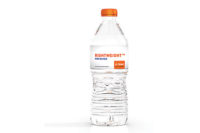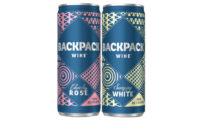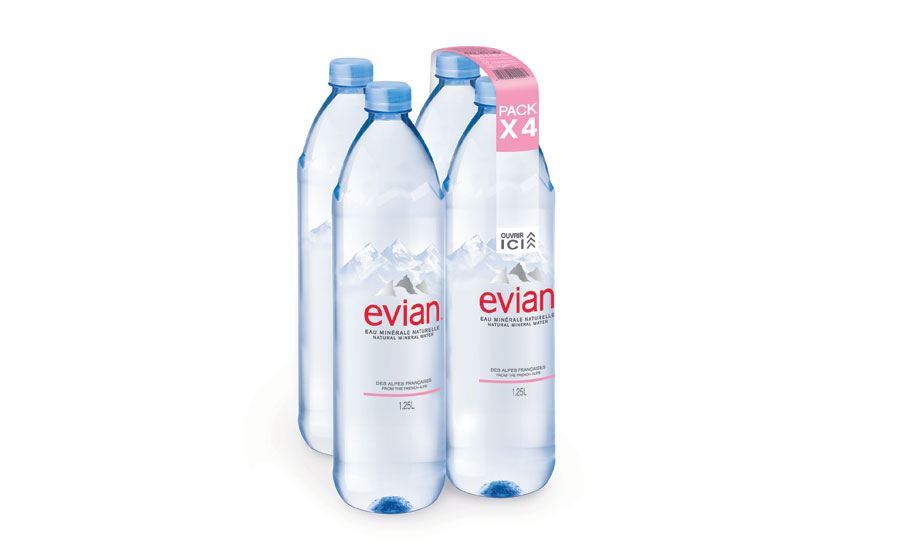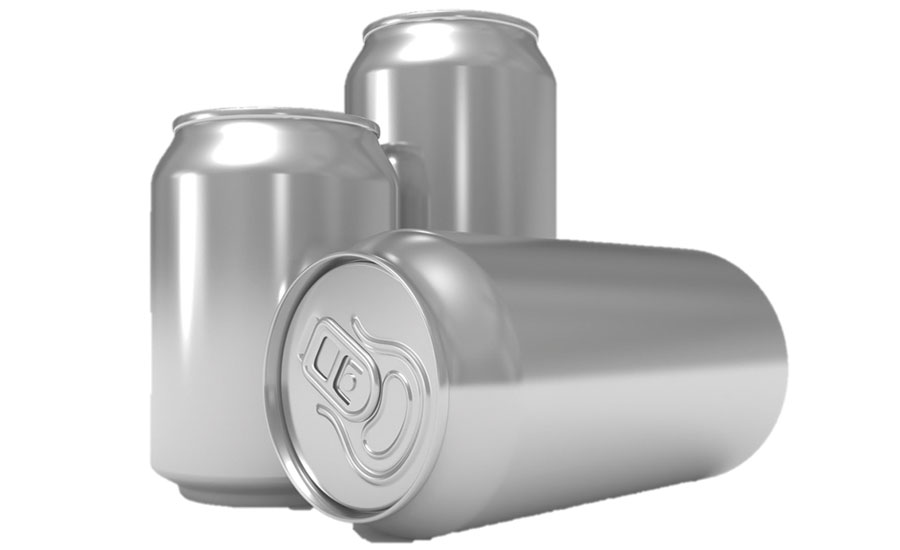Aluminum, glass and plastic help beverage companies deliver messaging
Research analysts predict modest growth in glass, aluminum and plastic



Lake Zurich, Ill.-based Copper Fiddle Distillery uses O-I’s Imperial Design bottles for its premium Bourbon Whiskey, Tom Gin and Fiddle Gin. (Image courtesy of O-I)







When Madonna sang, “You know that we are living in a material world, and I am material girl,” the American singer could not have foreseen that her “Material Girl” song would eventually characterize her in the mainstream media. Although Madonna was not singing about glass, aluminum or plastic, these primary packaging materials, like the 1984 pop hit, have become classics.
Packaging experts note that beverage manufacturers put a lot of time and effort into building their brands. They want to create awareness, encourage demand and foster loyalty and the type of primary packaging material — glass, aluminum or plastic — is a critical component to brand success.
Yet, as simple as it sounds, the packaging material needs to contain the beverage, notes SBAcci President John Maddox.
“Many under-informed consumers regularly ask me why the package just can’t ‘go away’ when they are finished with it. Typically they are referring to biodegradability,” he says. “But when you ask them how long they want to keep a product in their pantry, they come up with ranges from a few days to years. Then [consumers] start to understand that a package is primarily there to protect and then convey a product. Convenience is secondary.”
The Jacksonville, Fla.-based, company notes that consumers have myriad options to choose from, which is why the type of packaging material, the brand’s message and design must quickly resonate with consumers at the point of purchase.
“The package must appeal and convey the message of the brand,” Maddox explains. “Quality, clarity, color, shape, value, lightweighting, unbreakable, re-sealable, dispensing and … we have to get recycling in there … but the consumer has to buy [the product] before they can recycle it.”
Boosting packaging performance
Lightweighting, sustainability, quality and cost are among the many factors beverage brands should consider before choosing a packaging material. But consumer preferences for authenticity and premiumization also are key drivers of beverage packaging, according to packaging experts.
“Consumers prefer smaller, more direct and authentic brands that they perceive as higher quality and that translates to simple, sometimes vintage designs that reflect craftsmanship. For packaging, this means more natural, elemental materials such as glass or wood,” says Shawn Welch, vice president of sales and marketing for Perrysburg, Ohio-based Owens-Illinois (O-I).
“On the premium side, consumers aren’t necessarily looking for excess or opulence, but simple luxury, high quality and understated elegance,” he continues. “For glass, this means cosmetic glass bottles with thick bases and minimal decoration, but that work together with reserved label designs to present a harmonized, high-quality image.”
The Glass Packaging Institute’s President Lynn Bragg echoes similar sentiments. “The natural properties of glass make it a preferred packaging material and top choice for brands,” she says. “It’s superior for preserving and protecting product taste, while offering unmatched design possibilities. Glass bottles and jars also contain no petroleum-based liner that could interact with food or beverages … and glass has a strong and long record of sustainability.”
The Arlington, Va.-based association notes that glass can be molded into virtually any shape for a unique profile, to reinforce a brand image or to build shelf distinction. “Glass is the full sensory package,” she adds. “The standout benefits are the shapes, colors, designs, labels and graphics, and closures — even the distinctive ‘clink’ when bottles come together in a toast.”
Consumers choose glass for a variety of reasons — taste, transparency, health and safety, and premium appeal, she notes. For example, Absolute Vodka’s Absolut Electrik grabs attention with its semi-transparent metallic, mirror-like coating, she says.
India-based Transparency Market Research notes that the global market for glass packaging is expected to rise from $40.3 billion in 2013 to $55.2 billion by 2020, expanding at a 4.6 percent compound annual growth rate (CAGR).
But, glass is not the only packaging material experiencing growth. London-based Technavio reports that the global food and beverage aluminum can market is projected to reach close to $36 billion by 2020 and experience a CAGR greater than 3 percent.
In 2015, the Washington, D.C.-based Can Manufacturers Institute (CMI) commissioned a consumer research study to determine preferences and perceptions of beverage packages.
Conducted by Chicago-based FoodMinds, the online survey featured responses from 1,152 consumers, aged 18 and older, on three primary perspectives of the can-drinking experience: sensory, personality and need state. Additionally, the study looked at the use of cans, plastic bottles and glass bottles for 16 alcohol and non-alcohol beverages, it says.
Cans facilitate daily consumption, according to CMI’s “Open Up to Cans” white paper. For example, in the carbonated soft drinks (CSDs) category, 29 percent of consumers prefer cans compared with the 25 percent who chose plastic bottles. Similar preferences were shown across the domestic beer, craft beer and ready-to-drink (RTD) tea and malt beverage categories, it adds.
“The sound of opening a can … the hisses and crackles when you flip the tab … it’s a release of energy,” the report states.
Additionally, CMI’s white paper notes that two-thirds of consumers say they prefer aluminum cans because they are easy to grab and go, they feel colder and more refreshing, and they are tougher than other packages.
Global demand for PET
Technavio reports that the global recycled plastics market will grow at a steady CAGR of more than 4 percent from 2016-2020.
Additionally, Chicago-based Euromonitor notes that the global position of the PET bottle in the retail non-alcohol drinks marketplace is strong, recording a 4 percent CAGR in 2015.
Current global consumption of PET bottles in the retail marketplace, which includes the beverage, food, beauty and home care industries, amounted to 471 billion bottles in 2015. Some 42 percent of global PET demand came from Asia Pacific, with that number expected to rise to 47 percent by 2019, according to Euromonitor’s Head of Packaging Rosemarie Downey.
“PET is outpacing growth of other packaging materials because of its flexibility in form and size, especially in beverages,” she says. “The re-closability afforded by the PET bottle for on-the-go convenience is a pertinent, core strength of the format.”
Hünenberg, Switzerland-based Sidel notes that PET bottles account for 30 percent of total usage in beverages, with its strongest performance in the bottled water category.
A form of polyester, PET’s benefits include the fact that it is strong, shatterproof, lightweight, transparent, safe and recyclable, with an inherent barrier, which makes it well-suited for a wide range of food and beverage applications, according to Sidel’s Nicholas Bloch, executive vice president of group communications.
Although PET is the most utilized plastic in the beverage industry, other resins include recycled PET (rPET) and high-density polyethylene (HDPE), which most commonly is used for milk bottles, says John Cullen, DAK Americas PET resins director of marketing and sales.
The Charlotte, N.C.-based, company notes that PET might require a higher initial investment because of the required processing equipment but makes up for it in speed and efficiency. “The speed and efficiency of these processes yields a very low conversion cost that compares favorably to other methods such as extrusion blow molding,” Cullen says.
For example, DAK is using newer technology to develop large-format containers with handles, which have the melt strength to be extrusion blow-molded and form the handle while also retaining many properties of PET, including acceptability in the PET recycling stream, he says.
Using less plastic resin in the packaging, or lightweighting, remains a major trend in the plastic beverage packaging industry because it reduces costs and improves recyclability, Sidel’s Bloch says. The company designed RightWeight, a concept bottle weighing 7.95 grams compared with the average 12-gram weight for a commercial 0.5-liter water bottle, he adds.
“We have used the RightWeight name to highlight that lightweighting a bottle should not compromise the integrity of the bottle performance or the consumer experience,” Bloch explains. “The design prevents the ‘over squeeze’ issue that can result in unintentional content spillage. By reducing the packaging content, it offers … savings in the PET resin raw material itself and reduces the impact of transporting the bottles throughout the supply chain.”
Just last month, Düsseldorf, Germany-based NPM Systems GmbH brought the Nature Multipack Powered by KHS to market in France and Belgium. A two-year collaboration with France-based Danone Waters led to the market introduction of evian water using the new packaging, which bonds PET bottles together with specially developed adhesives, the company says.
“Convenient handles and individual bottle orientation effectively convey marketing messages. The pack is designed to endure transportation and merchandising logistics … and consumers can easily separate bottles from the pack,” the company said in a statement. The KHS-developed package also won a 2016 German Design Award for outstanding communication design and sustainable packaging, it adds.
Open up to sustainability
Recycling beverage containers remains at the forefront. Yet, the U.S. government has not enacted legislation to mandate minimum national recycling rates. But several states, including California, Connecticut, Delaware, Hawaii, Iowa, Maine, Massachusetts, Michigan, New York, Oregon and Vermont, have passed laws that establish deposits or refund values on beverage containers while other jurisdictions rely on recycling goals or landfill bans of recyclable materials, according to the National Waste & Recycling Association, Washington, D.C.
Because of state recycling legislation, many beverage companies are using PET, HDPE, glass or aluminum, according to SBAcci’s Maddox. “The penalty fees for any other material types are ridiculously oppressive,” he notes. “Only PET and HDPE are hitting high enough recycling rates … so PET and HDPE may be the only container plastics on the market soon,” he says. “The only challenge with PET and HDPE is resin price volatility. PET will generally change over time with changes in crude oil prices, [while] HDPE (in the North American market) will change with its feedstock, natural gas.”
Yet, the sustainability of beverage packages is important to American consumers. “Cans can be recycled infinitely, and more than 80 percent of consumers say that matters to them,” notes research reports commissioned by CMI between 2012 and 2015.
Additionally, 70 percent of adults surveyed said they would purchase a product because its packaging is better for the environment, it adds.
The Glass Packaging Institute’s Bragg says beverage manufacturers have a commitment to glass because it best showcases their premium products. “And glass packaging also is, on average, 40 percent lighter,” she says.
To meet the sustainability needs of beverage-makers, O-I continues to invest in innovations. “Today’s beverage-makers are highly focused on their total value chain,” O-I’s Welch says. “Glass bottles are made of recycled glass and three abundant, natural raw materials — sand, limestone and soda ash — all of which are sourced locally.
“O-I continues to lead the industry with research and development (R&D) efforts to make the glassmaking process even more sustainable,” he continues. “We recently invested $25 million in a state-of-the-art R&D facility at our headquarters that allows us to test next-generation glassmaking process and new products.”
Additionally, O-I’s plant in Muskogee, Okla., has been outfitted with a new furnace that significantly reduces energy use and emissions, including a 90 percent reduction in nitrous oxide emissions, he adds.
Although 76 percent of beer is packaged in glass, Euromonitor’s Packaging Associate Silvia De Almeida notes that demand for hard cider/perry packaged in glass is expected to rise. “Although cider sold in glass only represents 4 percent of the global alcoholic drinks market, … demand is expected to more than double in size by 2019, to 2.3 billion units,” she says.
Packaging experts note that attracting millennials, which by 2020 will account for one-third (about 83 million) of the adult population, will continue to challenge the beverage industry.
“The millennial consumer has different expectations than previous generations,” Bragg notes. “The ripple effect has been a rise in premium and ‘craft’ in nearly every beverage category, functional foods and beverages, smaller formats and more focus on health and sustainability.
“Brands that are making organic, clean-label and other functional beverages, a growing market category, want a package to match,” she continues. “Glass is the only ‘natural’ package. … We’ve been nimble to quickly respond to this emerging consumer base of smaller, more local producers [and are offering] expanded lines of stock bottles, mold innovations and pallet storage and delivery.”
Looking for a reprint of this article?
From high-res PDFs to custom plaques, order your copy today!












